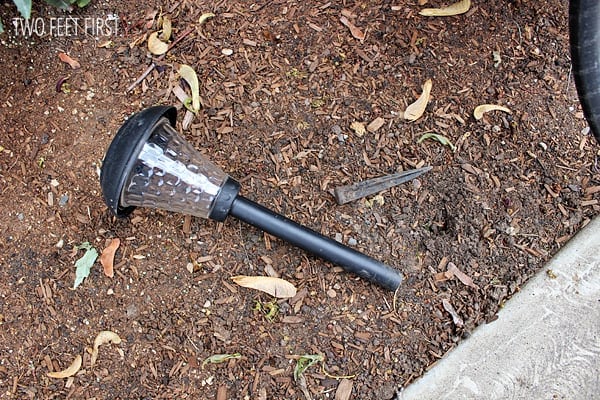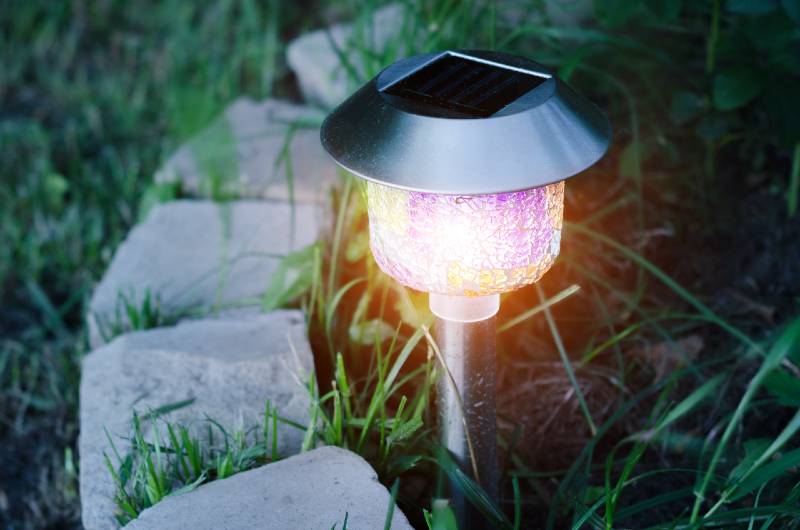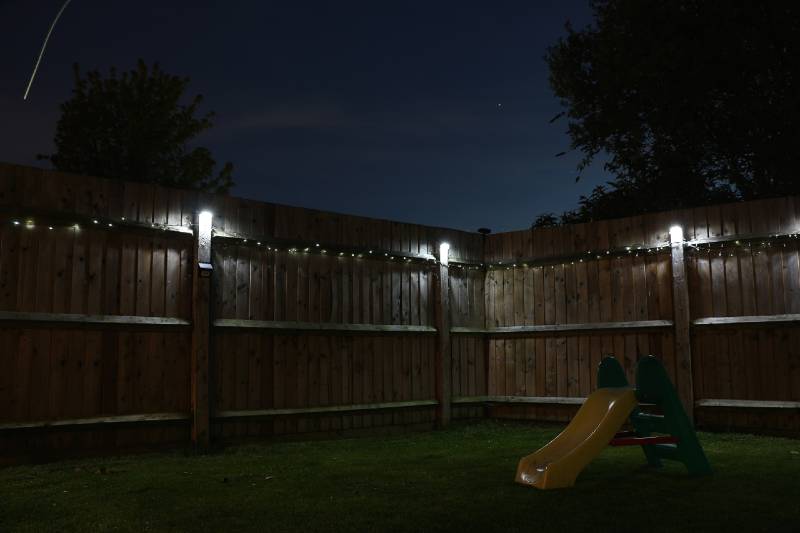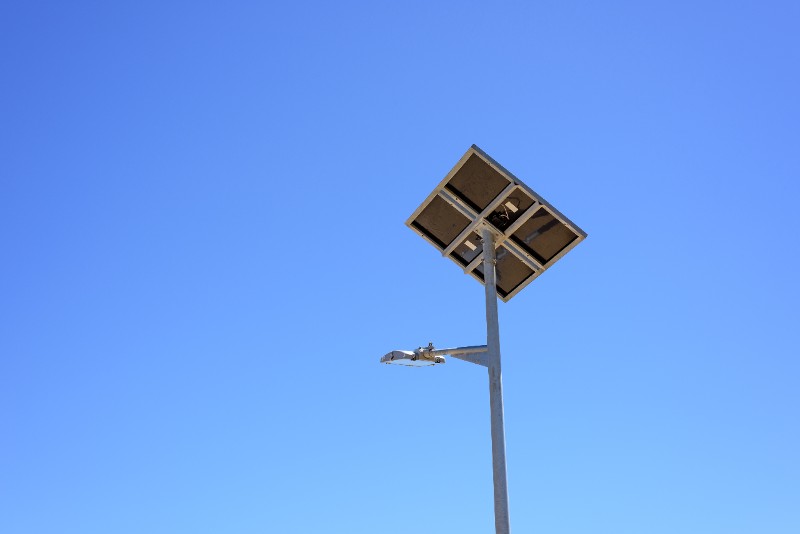You can use a higher mAh battery in solar lights as long as it has the same voltage rating as the previous battery.
However, while replacing your solar batteries with higher capacity ones might seem like a smart move, it’s not always ideal.
In fact, most of the time, you’ll be wasting your money.
I’m an electrical engineer with over 5 years of experience in working with solar lighting systems. From small solar fence lights to 2,000W solar street lights, I know them by heart.
In this article, I’ll help you determine whether you should use a higher mAh battery in solar lights or not, what is the perfect solar battery capacity for your solar lights, and how to choose the perfect one.
So without further ado, let’s jump right into it.
Key Takeaways
- You can use a higher mAh battery in solar lights. Just make sure the new batteries match the voltage and current specifications of the solar light.
- You must make sure the solar light’s panel can generate more electricity than the current battery can hold before considering investing in new solar batteries.
- To calculate the perfect solar light battery capacity, calculate the average amount of electricity the solar panel produces per day, factor in the battery’s DoD for more accurate sizing, then add a 10-20% buffer to account for fluctuations.
Should You Replace Your Solar Light’s Battery With a Higher Capacity One?
Before we answer this question, let’s first take a step back to understand how solar lights work.
The working concept of solar lights is pretty simple.
- The solar panel converts sunlight into electricity thanks to the photovoltaic effect. [1]
- The generated electricity from the solar panel flows through the battery — charging it in the process. [2]
- When the photoresistor (light sensor) at the top of the panel detects darkness (absence of light), it opens the path between the battery and the LEDs — turning on the light automatically.
Now, whether you should use a higher mAh battery in your solar lights or not depend on the amount of electricity your solar panel outputs on an average day.
If the solar panel is generating more electricity than what your current battery can store, then it makes sense to opt for a higher capacity battery.
If not, then getting a higher mAh battery won’t improve your solar lights by one bit. In fact, you’ll be ruining the new battery and wasting your money.
So, what is the best solar battery capacity for solar lights?
Well, I’ll show you exactly how to calculate that in the next section.
What is The Best Rechargeable Battery Capacity for Solar Light?
When it comes to solar light batteries, there is no one size fits all solution.
There are many different types of solar lights, each having its own specifications and needs.
What we’ll do in this section is teach you how to calculate the perfect solar battery size for your solar lights step by step.
1. Calculate How Much Electricity Your Solar Light’s Panel Produces
The amount of electricity your solar light’s panel produces depends on 2 factors:
- Your solar panel’s rating (Wattage or Ampere).
- The amount of peak sunlight your solar panel receives on an average day. [3]
And it can be calculated using this simplified formula:
Solar Panel Electricity Output (Ah) = Solar Panel Rating (mA) x Number of Peak Sun Hours It Receives (h)
I won’t get into what peak sun hours actually mean because it’s too technical.
All you need to know is that if your solar panel’s rating is 100mA, this means that your solar panel is generating 100mAh of electricity for every peak sun hour it receives.
On average, your solar lights will receive about 4 peak sun hours per day.
So if your solar light’s panel has a rating of 100mA, then we can expect the solar panel to produce about 400mAh per day.
In other words, we need a battery that can hold 400mAh of electricity per day.
Note: If your solar light’s panel is rated in watts (W), just divide the wattage rating (W) by the voltage rating (V) to get the amperage rating (A), then plug it into the equation.
2. Factor in The Battery’s DoD
The DoD, or Depth of Discharge, is a measure of how much of a battery’s total power is actually usable. [4]
For example, a battery with a DoD of 80% has 80% of its total capacity available for use.
The remaining 20% is preserved to maintain the battery’s lifespan and functionality.
Different battery types have different DoD values.
Here are the three most commonly used rechargeable batteries for solar lights and their corresponding DoD:
| Battery Type | Depth of Discharge (DoD) |
|---|---|
| NiCd (Nickel Cadmium) | 75% |
| NiMH (Nickel Metal Hydride) | 80% |
| Li-Ion (Lithium Ion) | 90% |
When choosing a battery capacity for solar lights, it is essential to factor in the battery’s DoD.
The actual usable capacity of a battery is its total capacity times its DoD.
Usable Battery Capacity (mAh) = Battery Capacity Rating (mAh) x Battery DoD Rating
For example, a battery with a total capacity of 1000mAh and a DoD of 50% will have 500mAh of usable capacity.
In our previous example, we calculated that we need a battery that can store 400mAh of electricity per day.
So to find the real battery capacity we need, we need to account for the DoD.
The equation is:
Battery Capacity Needed (mAh) = Required Storage Capacity (mAh) / DoD (%)
If we plug our numbers into this equation:
For a NiCd battery: Battery Capacity Needed = 400mAh / 0.75 = 533mAh
For a NiMH battery: Battery Capacity Needed = 400mAh / 0.8 = 500mAh
For a Li-Ion battery: Battery Capacity Needed = 400mAh / 0.9 = 444.44mAh
So the actual battery capacities needed for each type of battery, considering their respective DoD, would be:
| Battery Type | Battery Capacity Needed (mAh) |
|---|---|
| NiCd (Nickel Cadmium) | 533mAh |
| NiMH (Nickel Metal Hydride) | 500mAh |
| Li-Ion (Lithium Ion) | 444.44mAh |
This calculation is essential to ensure that your solar light operates efficiently, as choosing a battery with too small a capacity could result in the light not operating for as long as desired, while choosing one with too large a capacity could lead to wasted capacity and inefficient use of resources.
3. Opt for a Slightly Bigger Battery to Account for Fluctuations
Even after making careful calculations and choosing the right battery for your solar lights, there is still one more important factor to consider: fluctuations in solar energy production and consumption.
Variability in weather conditions, changes in usage patterns, and the gradual degradation of solar panels and batteries over time can all lead to unpredictable changes in your solar light’s energy balance.
To protect against these uncertainties, it is a good idea to opt for a battery that is 10-20% larger than the calculated need.
This buffer allows for fluctuations in the amount of sunlight received due to weather changes, changes in the efficiency of the solar panel due to age or wear and tear, and fluctuations in the light usage.
In addition, the excess storage space will come in handy in scenarios where your solar light doesn’t use up all the energy from the previous day, allowing it to store that extra power for future use.
This can be particularly beneficial during periods of several consecutive cloudy or rainy days when the amount of sunlight received might be less than usual.
Following our previous example, if we chose a battery capacity 20% larger than our calculated need, the actual capacities would now look like this:
For a NiCd battery: Required Capacity = 533mAh * 1.2 = 640mAh
For a NiMH battery: Required Capacity = 500mAh * 1.2 = 600mAh
For a Li-Ion battery: Required Capacity = 444.44mAh * 1.2 = 533.33mAh
| Battery Type | Battery Capacity Needed (mAh) | Buffer Capacity (mAh) |
|---|---|---|
| NiCd (Nickel Cadmium) | 533mAh | 640mAh |
| NiMH (Nickel Metal Hydride) | 500mAh | 600mAh |
| Li-Ion (Lithium Ion) | 444.44mAh | 533.33mAh |
This 10-20% buffer can make the difference between a reliable, well-performing solar lighting system and one that falls short of expectations.
Thus, factoring in this excess capacity when selecting a battery is a smart move to ensure your solar lights are always ready to shine, even when conditions aren’t ideal.
Factors to Consider Before Replacing Your Solar Light Battery With a Higher mAh One
- Solar Panel Output: Before replacing your solar light’s battery, it’s crucial to assess the amount of electricity your solar panel is generating. Remember, a higher mAh battery won’t improve your light’s performance if the solar panel isn’t generating enough electricity to fill the larger capacity.
- Voltage Compatibility: Ensure that your new battery matches the solar light’s rated voltage. If the battery doesn’t match the voltage requirements of the solar light, it can damage the light and affect its performance. Therefore, check your old battery’s specification table and make sure your new one has the same rated voltage.
- Battery Size and Fit: Some solar lights use AA batteries and some use AAA. Make sure to pick the ones that match your light’s battery size.
- Cost vs. Benefit: Consider the cost of the higher mAh battery against the potential benefits. A higher mAh battery will typically be more expensive, and if the extra capacity isn’t needed, it may not be a cost-effective upgrade.
Evaluating these factors can help you make an informed decision and optimize your solar light’s performance.
FAQs
Do I Need Special Batteries For Solar Lights?
You don’t need special batteries for solar lights. Any rechargeable battery with same voltage as the solar light will work just fine.
Can You Charge Solar Lights Batteries Using a Charger?
You can charge solar lights batteries using a charger. Just make sure the charger matches the voltage and current specification of the battery.
Can I Use Regular Batteries in Solar Lights?
You can use regular batteries in solar lights as long as they match the voltage and current specification of your solar lights. However, it’s important to mention that these batteries won’t be recharged.
How Long Do Batteries in Solar Lights Last?
Batteries in solar lights typically last around 1,000 charge cycle, which is about 3 years.
Last Words
We really hope you enjoyed this article as much as we did.
Do you have any other solar light battery questions? Do you have any ideas that can make the site better?
If so, please, let us know your thoughts in the comment section below.
References
- https://www.eia.gov/energyexplained/solar/photovoltaics-and-electricity.php
- https://www.engineersgarage.com/how-rechargeable-batteries-charging-and-discharging-cycles-work/
- https://8msolar.com/what-is-a-peak-sun-hour-psh/
- https://federalbatteries.com.au/news/what-depth-discharge-and-why-it-so-important






Your “Can I use Regular AA batteries in Solar Lights” section made
me laugh…specifically the part about hydrogen gas and “an explosion”.
If you’re referring to the solar cell current causing the battery to explode…
I think that is very, very unlikely! An inexpensive solar cell doesn’t have the output amperage to heat a battery that much.
Putting a non-rechargeable AA battery into a charger powered by house
current might possibly cause a small explosion…but the inconvenience of
doing that instead of just buying a rechargeable battery would be such that
I can’t imagine any normal person attempting it. The whole idea of a solar-
powered light is that it charges itself!
Hey David, you are absolutely right.
It’s very unlikely to happen (that’s why we used “may cause an explosion” instead of “can cause”).
However, there is still a chance and no matter how small it’s, if enough people used normal batteries in solar lights, it can eventually cause an incident or two. Also, there are a few solar street lights that have big solar panels that can produce enough amperage to heat the battery (still very unlikely though, but shit happens right?)
For the “using a charger to charge the battery part”, there are a few scenarios in which using a charger makes perfect sense. For instance, if there is a storm coming and you want to fully charge the batteries, so you can use the solar lights as emergency lights.
Finally, from my experience, you shouldn’t ever count on people’s intelligence or you will be very disappointed hahaha.
Stupid question from someone who knows nothing about solar rechargeable batteries. I had a light go out and ordered another battery. It was the same, except the old one was a 900 mah and the one I ordered was a 900. I put the new one in the light and let it (charge) for nearly one and a half days. No light. I took a battery from another light right next to it and the light went on, so as far as I can tell the battery was faulty. HELP PLEASE!
Here is what you need to do:
Check if the new battery specifications (volt and amperage) are identical to the old one or to the battery that made the light work at least. If they don’t match, then this could be the reason why your solar light isn’t working and you need to get another battery. However, if they do, then most likely your solar light itself is faulty. I assume you bought a pack of 2 or 4 and one isn’t working right? If this is the case, contact your seller and ask for a replacement, if not or you are out of warranty, then you could check this article on how to fix solar lights
If you need any extra help please let me know 😀
Thank you! Batteries are the same except mah is 1000 not 900 as original battery. Shipped them back and will get another one. Thanks again. Jim
Glad I could help 😀
I purchase a set of 6 solar lights for my yard. One of the lights has stopped working after only 3 months. I took a battery from one of the other 6 lights and the light worked, so I am assuming that I need to purchase a new battery. The problem is that I am unable to find a battery with the exact same specs. The battery is an AA 500mAh NI-MH that is 2v. Can I use a 600mAh 1.2v ???
I know this sounds silly, but are you sure your lights’ batteries are 2 volts not that the “1.” is scrapped off?
That’s the first time I see it, could you please share a link to your solar lights?
To answer your question, if your battery is actually 2 volts, then a 1.2V battery won’t be able to run your lights – efficiently at least, as the voltage diff is quite big.
Hi, i replaced my old aaa bateries (200 mah) by 800 mah. I’d use the old ones for a small electronic project But I can’t charge them with any of my regular chargers (it seems not detect the charge or battery). The old ones still works but can’t change in a regular charger, just in the solar lamp. How can I charge them? Thanks
Replaced a lithium 2000mah battery in a solar spot light with a 2000mah one. Unknown voltage in mine…paperwork didn’t specify that. Size wise the new one was a lot smaller. Couldn’t find one exactly like original. It was outside for 4 days…rainy day 2 cloudy days.. on sunny day it blew up in the afternoon. Large enough explosion to be heard for about 2 blocks. The solar panel blew 63 feet away. The rest was on the ground in the vines and pieces of plastic everywhere. Battery split in 2. Couldn’t find the glass fuse. Won’t ever replace solar batteries. Just buy new ones.
Replacing AA 1.2v 700 mah can’t find did find 800 mah will that work before I throw them away no first time on site
Yes, 800mAh will still work with your solar lights, however, make sure the batteries are solar compatible, as not all rechargeable batteries can be charged with solar panels. We have a post dedicated to the best batteries for solar lights, make sure to check it out.